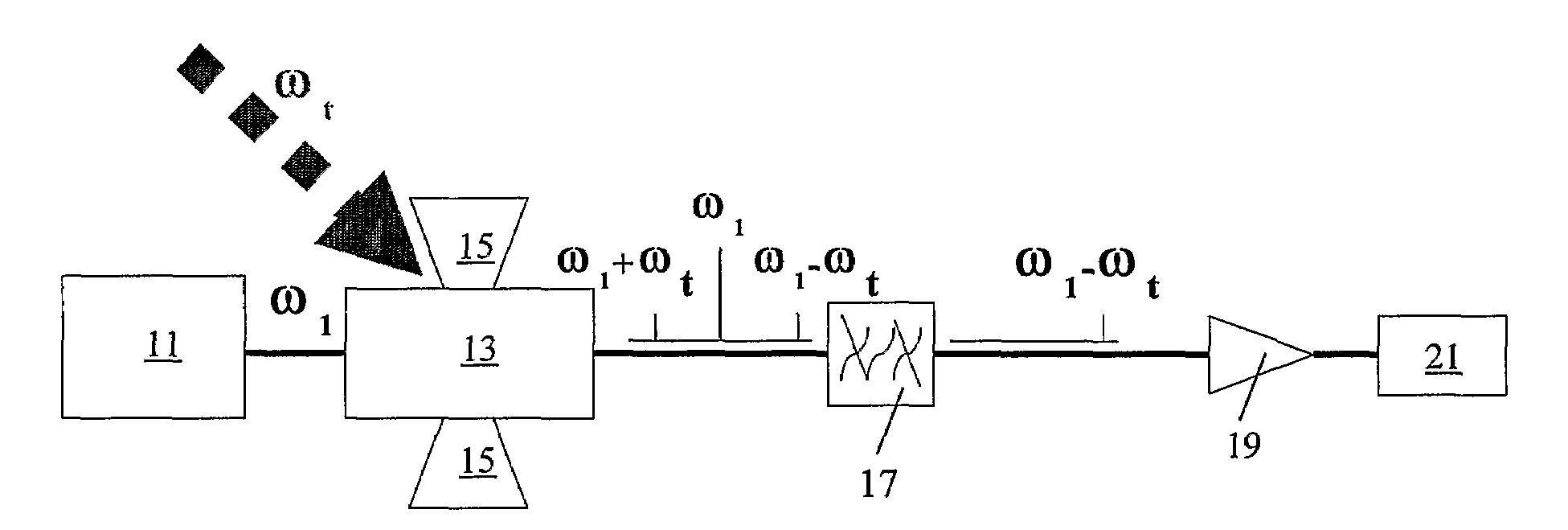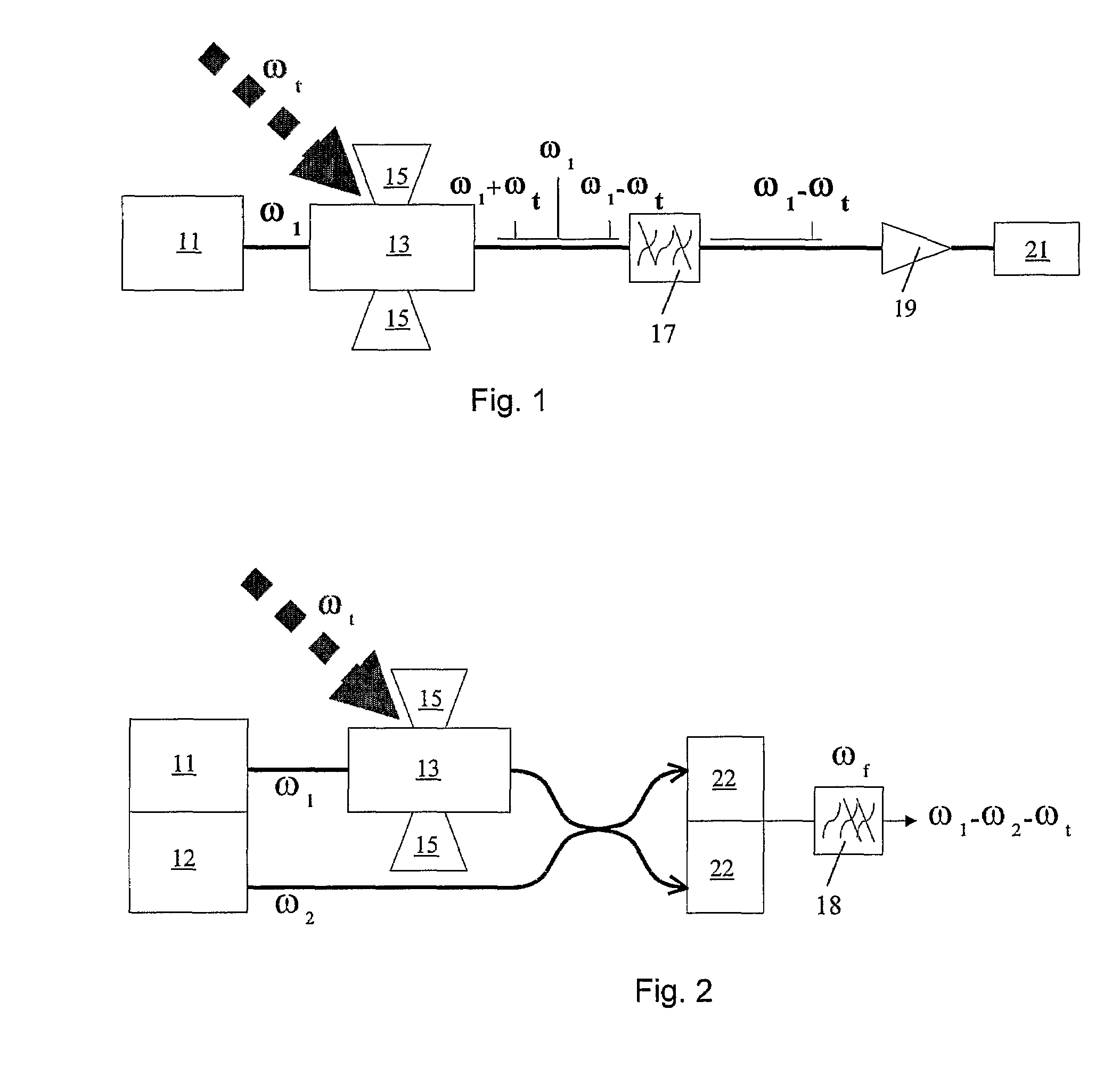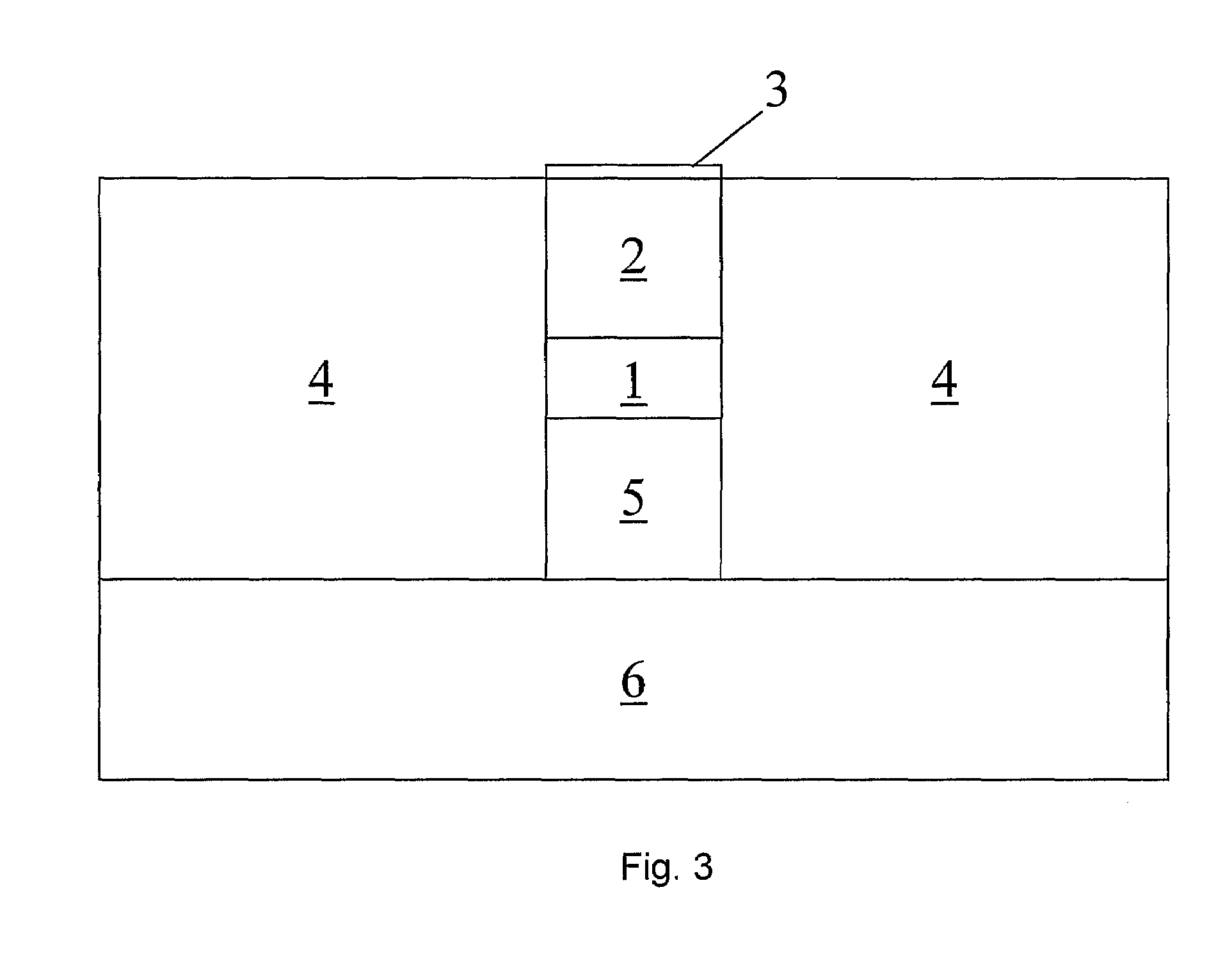Terahertz detector
a detector and terahertz technology, applied in the field of detectors, can solve the problems of cryogenic cooling, large and expensive pulsed lasers, and complicated pulsed lasers, and achieve the effect of increasing the signal to noise ratio and increasing the sensitivity
- Summary
- Abstract
- Description
- Claims
- Application Information
AI Technical Summary
Benefits of technology
Problems solved by technology
Method used
Image
Examples
example 1
[0026]If the DC transfer characteristics are similar to an existing modulator design ((dT / dV)̂2) / T0˜0.5) and the power out of laser 1 is 10 mW, then assuming representative values of Rωt˜0.01, Vp˜0.01V (corresponding to a 1 μW absorbed THz radiation in a 50 Ω antenna), R˜0.8 A / W and Δf˜50 MHz then the expected S / N ratio is approximately 21 dB.
example 2
[0027]Sensitivity can be greatly improved through use of a narrower electrical filter to reduce Δf if the laser wavelengths can be controlled with enough precision and their linewidths are narrow enough.
[0028]For example if the laser was sufficiently stable and narrow linewidth to permit operation with a 1 kHz electrical filter (to allow sampling at up to 1 kHz) then if the same parameters as in Example 1 are used the expected S / N ratio is approximately 68 dB. This S / N ratio and sample rate are thought to exceed current state of the art systems.
[0029]In summary, a detector for electromagnetic radiation in the range 80 GHz to 4 THz comprises a laser light source 11, an optical modulator 13 arranged to modulate light from the laser light source 11 and a filter system 17 for selecting a defined range of frequencies of the modulated light. The optical modulator is an electroabsorption modulator 13 with an antenna 15 which is sensitive to electromagnetic radiation in the range 80 GHz to ...
PUM
| Property | Measurement | Unit |
|---|---|---|
| frequencies | aaaaa | aaaaa |
| electric field | aaaaa | aaaaa |
| frequency | aaaaa | aaaaa |
Abstract
Description
Claims
Application Information
 Login to View More
Login to View More - R&D
- Intellectual Property
- Life Sciences
- Materials
- Tech Scout
- Unparalleled Data Quality
- Higher Quality Content
- 60% Fewer Hallucinations
Browse by: Latest US Patents, China's latest patents, Technical Efficacy Thesaurus, Application Domain, Technology Topic, Popular Technical Reports.
© 2025 PatSnap. All rights reserved.Legal|Privacy policy|Modern Slavery Act Transparency Statement|Sitemap|About US| Contact US: help@patsnap.com



